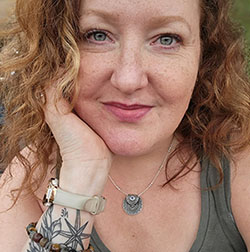So, you’ve hired (or plan to hire) a designer—great! That means you don’t need to understand design principles, right? Wrong.
Here’s the thing: even when you’re paying a professional, being able to talk about design in a way that makes sense to both of you is crucial. Otherwise, you risk spending time, energy, and money on something that doesn’t quite feel right—and not knowing how to explain why.
If you’ve been following along, we’ve talked about how to design for real-life needs, multifunctional spaces, entertaining, and hosting guests—but all of those things come down to core design principles. Knowing a few key terms will help you:
- Give clearer direction when working with a designer.
- Make confident choices when picking furniture, colors, and layouts.
- Understand why a space feels “off” and how to fix it.
Let’s break down the 12 most important design terms and how they apply to everything we’ve talked about so far.
1. Scale (a.k.a. Why That Sofa Looks Wrong Even Though You Love It)
Scale is the size of objects in relation to the space they’re in. Ever buy a piece of furniture that looked great in the store but completely overwhelmed your living room? That’s a scale issue.
Where It Matters:
- In multifunctional spaces, oversized furniture can eat up valuable room.
- In entertaining spaces, a giant coffee table might leave people awkwardly maneuvering around it.
- In guest spaces, cramming too much into a small room makes it feel cluttered instead of cozy.
💡 Fix It: When choosing furniture, check dimensions and visualize the scale in your space before buying. This is where a good designer can be the ultimate lifesaver, offering design plans and layouts to help you visualize the space.
2. Proportion (Not the Same as Scale, But Just as Important)
If scale is about size in relation to space, proportion is about how objects relate to each other. A massive headboard with tiny nightstands? Bad proportion. A tiny light fixture over a large dining table? Also bad proportion.
Where It Matters:
- In guest rooms, making sure furniture feels balanced (not too big or too small in comparison to other pieces).
- In living areas, ensuring sofas, rugs, and coffee tables feel cohesive—not like a mismatched puzzle.
💡 Fix It: Stick to the two-thirds rule—larger pieces should be about two-thirds the size of the piece they’re paired with (e.g., a light fixture should be about two-thirds the width of the table below it).
3. Flow (a.k.a. Stop Blocking the Walkways)
Flow is how people naturally move through a space. If you constantly find yourself bumping into furniture or dodging chairs to get to the kitchen, your flow is off.
Where It Matters:
- In entertaining spaces, making sure guests can move freely instead of forming a human traffic jam.
- In multifunctional rooms, ensuring different activities (working, relaxing, eating) don’t compete for space.
- In the entire home, taking into consideration the physical needs of everyone who steps in the house, whether due to their age, size, or ability.
💡 Fix It: Before committing to a layout, walk through it as if you were a guest—if you have to take a weird path to get somewhere, rethink it.
4. Negative Space (a.k.a. The Art of Letting a Room Breathe)
Negative space is the empty space in a room that allows everything else to shine. If every inch of a space is filled, it feels overwhelming.
Where It Matters:
- In small spaces, resisting the urge to fill every available spot with furniture.
- In guest areas, leaving space for guests to move and store their stuff.
- In entertaining spaces, making sure seating arrangements don’t feel too packed.
💡 Fix It: Not every corner needs a chair. Not every wall needs art. Embrace a little breathing room.
5. Balance (Why Some Rooms Just Feel Right)
Balance is about evenly distributing visual weight in a space so one side doesn’t feel heavier than the other. If everything bold, dark, or large is on one side of a room, it feels lopsided.
Where It Matters:
- In living rooms, making sure one side isn’t packed with furniture while the other feels empty.
- In guest rooms, distributing colors and textures evenly for a calming feel.
💡 Fix It: If a room feels off, check where the largest, boldest elements are concentrated. Spread them out for a more balanced look.
6. Focal Point (Because Your Eyes Need a Place to Land)
Every space should have one key feature that immediately draws attention. A fireplace, a large piece of art, or even a bold sofa can serve as the focal point.
Where It Matters:
- In multifunctional spaces, defining different areas with strong focal points.
- In guest spaces, creating a welcoming feel with a standout element (a great bed, a statement headboard).
💡 Fix It: If your room doesn’t have a focal point, create one with color, texture, or standout furniture. The focal point could also be a cohesive art display that draws your eye (and soul) in.
7. Contrast (Without It, Everything Blends Together)
Contrast is what keeps a space from looking boring. It’s the mix of light vs. dark, rough vs. smooth, modern vs. traditional that makes a room interesting.
Where It Matters:
- In guest spaces, avoiding an all-beige, forgettable setup.
- In entertaining spaces, layering textures to create visual depth.
💡 Fix It: Pair opposites—soft rugs with sleek furniture, dark walls with light furniture, vintage pieces with modern accents.
8. Unity & Cohesion (Because Random Doesn’t Always Mean Interesting)
Unity means everything in a room feels connected—whether through color, style, or repeating elements.
Where It Matters:
- In multifunctional rooms, ensuring different areas feel intentional, not thrown together.
- In guest spaces, using a consistent color palette to create a calming vibe.
💡 Fix It: Stick to 2-3 main colors and repeat them in small ways (pillows, art, accessories).
9. Texture (The Secret Ingredient to a Cozy Room)
Texture is how things feel—and how they make a space feel. Too many smooth surfaces? The room feels cold. A mix of fabrics, woods, and metals? Instant warmth.
Where It Matters:
- In living areas, adding soft textures (throws, pillows, rugs) for coziness.
- In guest rooms, making the bed feel inviting with layered bedding.
💡 Fix It: Mix at least three different textures in a room—metal, wood, and fabric are a great starting point.
10. Functionality (Because Pretty Isn’t Enough)
At the end of the day, if a space doesn’t work for your life, it doesn’t work. Period.
Where It Matters:
- In entertaining spaces, ensuring furniture is comfortable and arranged for conversation.
- In guest rooms, keeping essentials within reach.
💡 Fix It: Every design choice should answer one question: Does this make life easier or harder? If it’s the latter, rethink it.
Your Homework: Put These Design Principles to Work
Want to see if your home is actually following good design principles? Try this:
1️⃣ Walk Through Your Home Like a Guest – Take a fresh look at your space and ask yourself: Does the flow make sense? Are there awkward bottlenecks? Is there a natural focal point? If something feels off, now you know why.
2️⃣ Test Your Scale & Proportion – Is your coffee table too big for your sofa? Are your nightstands comically small next to your bed? Grab a tape measure and check—if anything feels wildly off, it probably is.
3️⃣ Play with Negative Space – Remove one thing from an overstuffed area and see how it changes the feel of the room. You might be surprised how breathing room can improve a space instantly.
4️⃣ Find One Area That Lacks Texture or Contrast – Got an all-beige room? Add a pop of color or a mix of materials (wood, metal, fabric) to bring it to life.
5️⃣ Snap a Photo of a Room You’re Struggling With – Weirdly, looking at a photo can make design issues (bad balance, poor proportion, lack of cohesion) more obvious than seeing it in person.
Bonus: Pick One Design Term You Learned & Apply It – Maybe it’s fixing the proportion of your artwork, improving flow in your living space, or embracing a better focal point. Small changes can make a huge difference!
Come back and tell me—what did you notice? What design term suddenly clicked for you? Let’s put this knowledge to work!
Next Up: Demystifying Color—How to Talk About Color Like a Pro
Color is one of the most powerful tools in home design—it sets the mood, defines the space, and brings everything together (or, when done wrong, makes everything feel off). But just like with general design principles, understanding the basics of color theory can make or break your decisions—especially when working with a designer.
Next time, we’re diving into color psychology for the home, how to talk about color without getting lost in the endless sea of swatches, and why executing a cohesive color scheme is not a DIY free-for-all. Whether you’re repainting or working with existing walls and flooring, we’ll break down how a designer approaches color choices—from the big-picture strategy to the smallest details.
And after that? We’re bringing technology back into the conversation—because fitting tech into your design scheme for true cohesion is an art form all its own. Stay tuned!
Until next time, may your negative space be intentional, your textures be layered, and your home feel less “meh” and more chef’s kiss.
Stay weird, stay wonderful.
Steph

